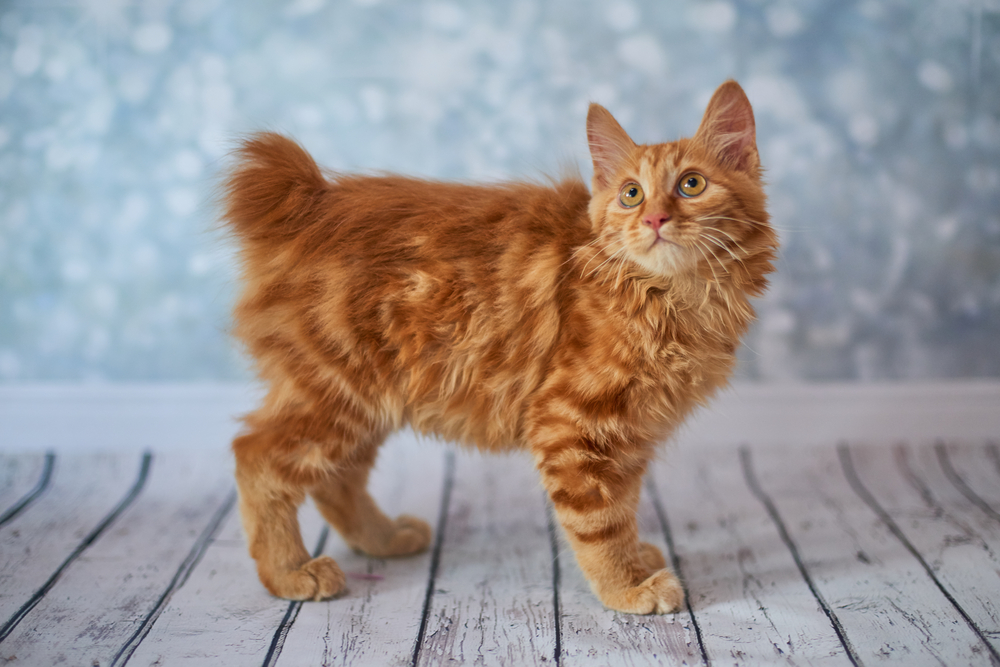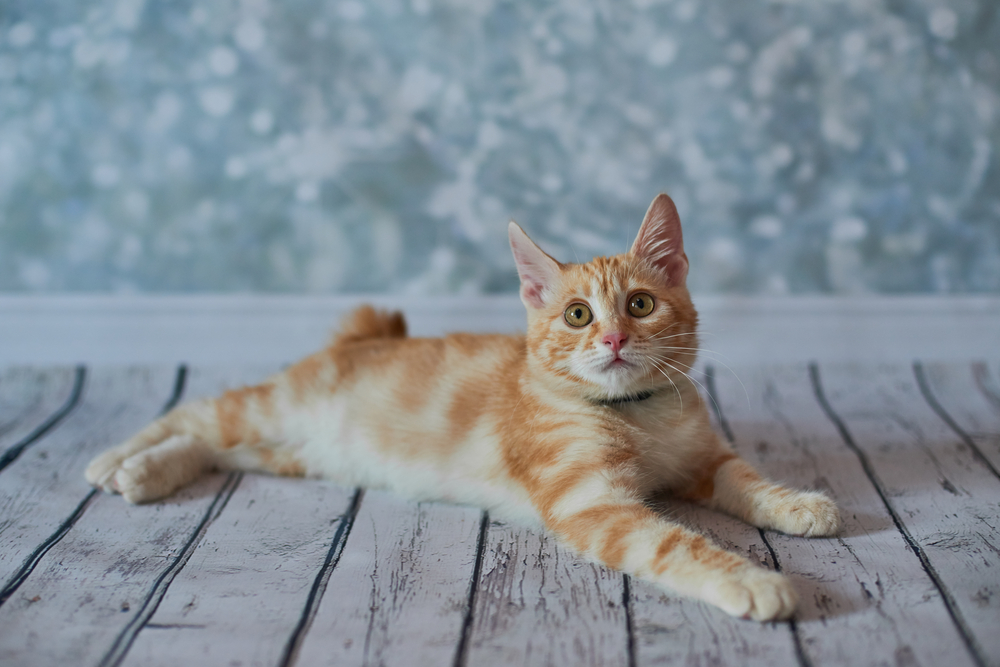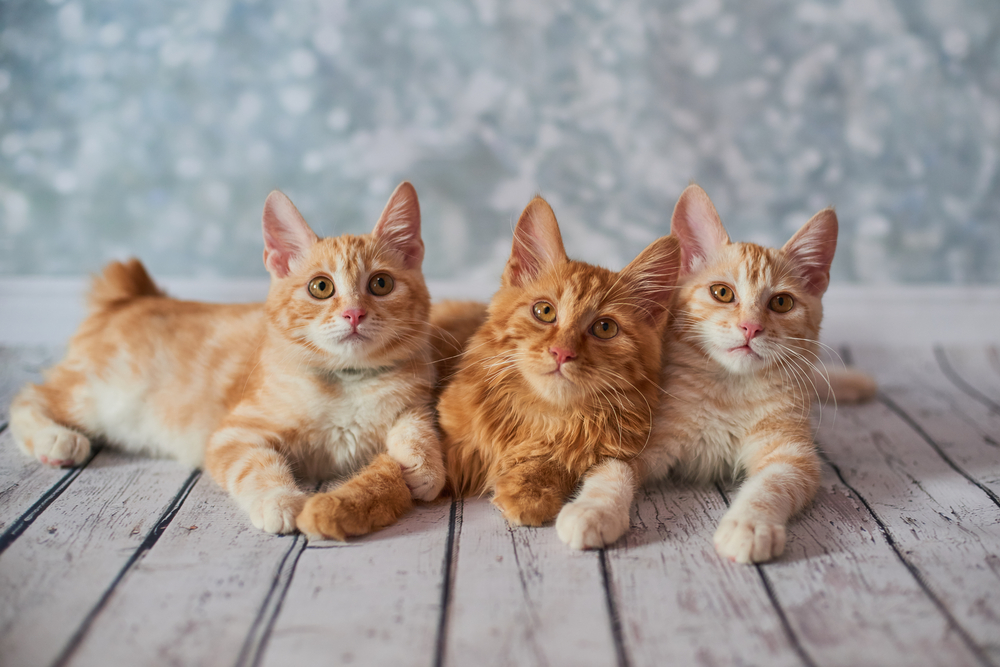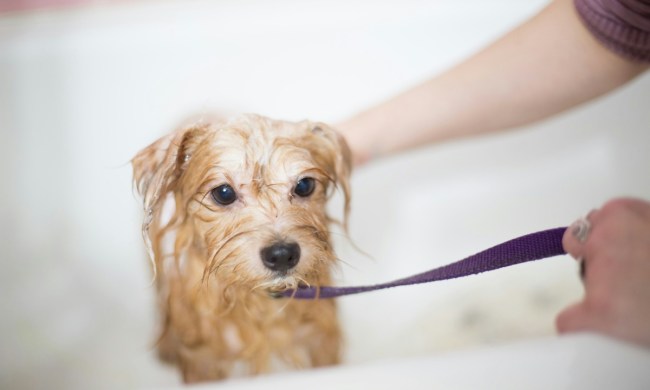Despite their adorably distinctive short tails, low grooming needs, and high intelligence, the American Bobtail is often overlooked when would-be cat parents search for a new feline friend. Whether you’re a seasoned cat parent or a first-time owner, the American Bobtail is ideal for any household. This interesting breed emerged in the 1960s and gained its famously bobbed tail due to a cross between a Siamese cat and a short-tailed tabby. They’re on the larger side, with some weighing up to 20 pounds.
American Bobtails live an average of 15–20 years, so you’ll be able to share your life with your feline companion for a long time. Some bobtails have short coats, while others have long coats. They come in a variety of colors and coat patterns, and they have a somewhat wild appearance despite being notorious lap cats. Let’s take a look at six amazing reasons the American Bobtail might be the perfect cat for you.

1. They’re incredibly smart
While some cats are difficult to train, American Bobtails are so well behaved, they’re considered the perfect therapy cat; they’re often used in hospitals, schools, and nursing homes to brighten the mood. Because of their intelligence, you can train American bobtails to walk on a leash and even perform tricks. Intelligence and curiosity often go hand in hand — or paw in paw — so you may want to take precautions with an American Bobtail. They’re fascinated by anything shiny, so make sure to keep any jewelry, nail clippers, or scissors out of your cat’s reach.
2. They get along with everyone
Curious about the typical American Bobtail temperament? You’re in luck. If you’re looking for a cat who can befriend children, seniors, other cats, and even dogs, this laid-back feline will make a fantastic addition to your home. American Bobtails are known for their friendly dispositions, and they’re often called “the golden retriever of cat breeds.” You’ll want to introduce your American Bobtail to your other pets slowly and with supervision. While American bobtails are gentle and patient, you should teach your children to be calm and careful when they interact with any fur baby.
3. They aren’t too high energy
Some cat breeds, like the Scottish fold and Bengal, are so energetic, they can sometimes behave aggressively if they don’t get their way. Other breeds, like Persians and Ragdolls, dislike exercise, meaning they can gain weight easily. American Bobtails are the perfect happy medium. With moderate energy levels, they’ll be happy to play with you — or go for a walk around the neighborhood — without being too high strung. Naturally affectionate (and sometimes a little clingy), bobtails are perfectly happy to sprawl out on your lap for a snuggle session.

4. They don’t need specialized grooming
Visits to your local groomer add up quickly, but American Bobtails don’t need much help to look beautiful. If you have a long-haired American Bobtail, you’ll want to brush her once or twice a week to prevent her coat from matting and help cut down on shedding. Short-haired American Bobtails don’t have the same issues with matting, so you can get by with brushing once a week. Occasional baths are necessary if your cat gets dirty, but you can usually go several months without bathing your bobtail.
5. They don’t have many health issues
Just like people, all cats have different health needs. Generally speaking, American Bobtails are an incredibly healthy breed without many health issues. However, like any breed, they may be predisposed to certain issues like hip dysplasia and spinal problems, though occurrences are uncommon. Any cat owner should be on the lookout for ringworm, which affects 98% of cats at some point during their lives. Ringworm is a fungal infection that can spread from cats to humans, and it’s characterized by a red, bull’s-eye–shaped rash, hence the name.
6. They enjoy playing in water
Unlike some cats, who yowl and scratch when it’s time for a bath, the American Bobtail is known for their sometimes doglike behavior. In addition to playfully dunking their toys in water, the American bobtail is less likely to pitch a fit when it’s time for their bath. These clever cats can even be trained to think of bath time as a game, cutting down on the risk of scratches.

Although not as famous as other breeds, the sometimes overlooked American Bobtail deserves a place in our homes and in our hearts. Fans of American Bobtails cherish the breed’s gentleness and inquisitiveness. If you’re looking for a new fur baby, this playful, clever breed will quickly become your new best friend.



